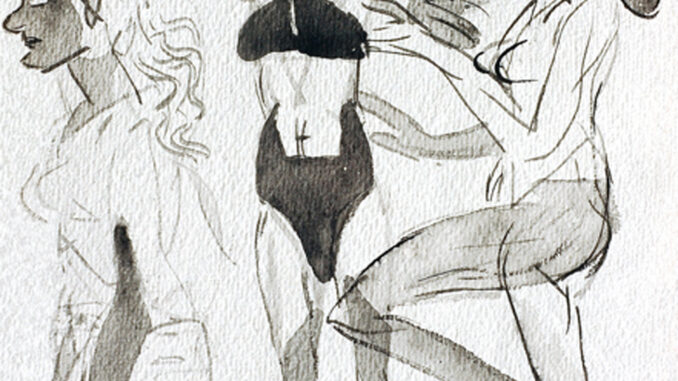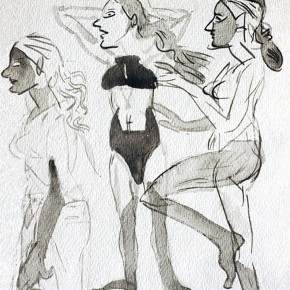
The Guild, Mumbai opened The Art of Drawing on 7th October 2011. The exhibition brings together the works of eminent Indian artists Dilip Ranade, Gieve Patel, Himmat Shah, Jyothi Basu, K.G. Subramanyan, Krishen Khanna, Parag Tandel, Sudhir Patwardhan, Tushar Joag and Vilas Shinde. It is a selection of works in different types of drawing – scribbles, doodles and sketches, in various media – pastel, charcoal, pen, ink and graphite pencil. It examines the impulses behind drawing and the reasons why artists draw.

These reasons are multiple and varied, and the drawings that result from such varied impulses look very different from each other. A studied rendering of a model in the studio is different from a quickly rendered sketch of a figure seen in the street. An idle doodle is different from a charged venting of emotion on paper. Drawings done to clarify a vague idea in the mind are different from drawings done to abstract the essential forms in nature; the list can be as long as the number of artists who do drawings.
Until recently the activity of doing some form of drawing daily was considered essential for every artist. It was part of the discipline of being an artist and was considered the foundation on which an artist built. It was essential for keeping the connections between eye, brain and hand alive and alert.
In the last few decades drawing seems to have lost this generally accepted eminence in the creative process. Firstly, with the spread of photography from the beginning of the twentieth century, the reign of one kind of naturalistic or academic drawing came to an end. Nevertheless, drawing still flourished in the modern period. Artists found new uses for and purpose for drawing. And the forms that drawings took multiplied. In the past twenty years or so however, with the advent of the new media in art – video, photography, installation etc. and the spread of the computer in design and architecture, drawing seems to have receded somewhat from artists’ practice. Its position in the academic curriculum too is unstable and its need is not universally felt.
Drawing may have lost its position as the foundation of all art, but it is still widely practiced, even passionately pursued. This exhibition gives some sense of the variety of ways in which drawing is still used as a tool of exploration, and as a mode of expression.
Thanks to Sudhir Patwardhan and Ketaki Yadav


Leave a Reply